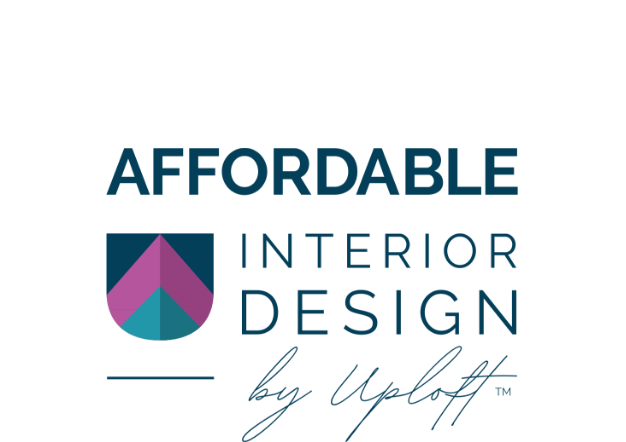This week, I’m leading off the podcast with a topic before diving into the mailbag. I work with clients every week, transforming their spaces and learning about what they want to do in their homes or commercial spaces. Bringing some of those topics to you is going to be so fun!
This week’s topic is updating a condo, apartment, or co-op [3:28].
We’re talking about how to update a condo, apartment, or co-op to make it a bit more modern. I frequently see big, concrete buildings that were built in the 50s and 60s in New York City. These buildings have very little character, and they look dated, bland, and boring. We also work in co-ops and condos that are pre-war. They may have a lot of fantastic turn-of-the-century details, but those details can also lend themselves to feeling quite traditional. Some of my clients feel like it doesn’t evoke that light, airy feeling they were hoping for or that they had in a previous apartment. The space isn’t as modern as they’d like it to be.
Now, as interior designers and listeners of this podcast, we know that modern refers to a specific era; a specific style from the 50s and 60s that references clean lines, lacquer, and bold but minimal touches. When my clients use the word modern, however, they mean ‘what’s going on today’. In “interior design and style lingo”, that is contemporary – but nobody really uses contemporary. If you ask me, we need a new word for “modern” that refers to the style way back when, and we need to be able to use “modern” in this contemporary application. That’s what everybody is searching for and asking about. Today, just go with me as I use “modern” to mean “contemporary”.
[5:58] Remove excessive window treatments
One way to modernize your condo is to remove any excessive window treatments that don’t actually function. A header, for example, is at the top of the window. It could be a wood structure, fabric, or something that is painted to look like trim. The problem with all of those things is that they are bulky. They serve no function. They are not clean lined, or minimal, or contemporary. They cut off a lot of natural light at the top of the window, and in places that don’t get a ton of light or that don’t have long windows, losing 8-10 inches at the top of a window is pretty detrimental.
Replacing these bulky window treatments with a long rod and two panels keeps it really clean and minimal, in line with the modern aesthetic. You don’t even have to do drapery. You could just do a blind and leave it at that. That would be super sleek, especially if you did something like a roller blind. You can have the whole window open and unencumbered by excessive window treatments.
[7:55] Replace small pieces of art
Whether you have small groupings of art or tiny touches mixed in with larger statement pieces, I recommend removing those pieces. We are trying to minimize and to make bold, fresh statements rather than cluttering the space with lots of small things. The same rule should be applied to accessories. Look at your bookshelves, your floating shelves, and the surfaces of your coffee and end tables. If you have a lot of knick-knacks, picture frames, or display books, that stuff really needs to be pared down.
Instead of having lots of little things we can think about making statements that still fill the space under one larger idea. For example, instead of having a shelf that showcases picture frames, a candle, a few books, and a souvenir, you could just do an elongated planter featuring small succulents. You could also do a chunky basket with a lid. It’s just one piece, but it fills the shelf and provides a lot of function within a clean, uncluttered space.
[9:15] Look for furniture that has legs
Furniture that goes all the way to the ground, such as a sofa with a skirt or a swivel chair with a disc base, feels heavy. It doesn’t feel minimal, light, and fresh like contemporary or “modern” design should. Furniture with legs will feel less heavy or old-fashioned.
Then, I answer questions about…
[11:20] Achieving different styles with your plumbing fixtures (Morgan)
Question:
I actually sell [plumbing] fixtures for my job, but I’m still kind of new to it, and I’m curious how you would describe achieving different styles with your fixtures. One example would be, I had a client come in asking about mid-century modern fixtures and how to make that cohesive with the rest of them. Typically, my clients say they want modern or sometimes even traditional, but when we get into other styles, I’m not really sure what to recommend to them. Can you help me out with this? What shapes would you look for? Are there certain colors or finishes that fit into one style better than another? I do tend to see black with modern, or oil-rubbed bronze tends to be in more traditional homes. Do you have recommendations for what to look out for? Feel free to talk about lighting as well. I think these things go hand in hand, as these items are frequently purchased together to match them.
Answer:
First of all, I want to congratulate Morgan on her new job. Working in design is a fun occupation, and now more than ever, it makes a really big impact on people’s lives. We’re all at home all the time, and we need to be looking at pretty things that align with our style.
In my humble opinion, there is not one finish that aligns with a certain style. I think black metal finishes can work really well in modern or contemporary designs, but they also work beautifully in rustic farmhouse style. They can be just right in an industrial style space, and of course they can be traditional depending on the details. So, it’s not about the finish of the piece that gives it style. It’s about the lines, the shapes, and the look.
I do have strong opinions on metal finishes. When picking out hardware, you should keep it consistent throughout the home if possible. I know a lot of us move into homes and just want to renovate the kitchen – we don’t want to change out every door knob and hinge from the attic to the basement, just because we want a new faucet. It’s not practical for all of us. I know that my kitchen features silver, and the architecture of my home actually has a lot of oil-rubbed bronze. It has those old door knobs with the crystal and then oil-rubbed bronze back plates. I don’t have the time, nor the energy, to change all of that out right now. If I was starting from scratch, however, I would keep the metal finishes throughout the architecture of the home.
So when selecting these fixtures, we want to know more about the hinges, the door knobs, and the light fixtures within the home. I might also want to know about the architecture of the home, so I could select aligned fixtures.
It is also important to consider resale value. If a mid-century modern loving person moved into a Victorian, a lot of her furniture might harken back to that mid-century modern era. If you put a mid-century modern faucet in a Victorian, though, unless you do a lot of work to undo what was already going on architecturally, it’s going to look like an anomaly. It is not going to look cohesive.
If it’s something more neutral, like those concrete blocks in New York City, you could project your own style quite easily when picking out a faucet. In a place that already has a lot of personality, however, we need to compromise or else we have to completely gut the whole place.
So the short answer to Morgan’s question, therefore, is that it’s nuanced. There is no finish that aligns with one style.
I do also worry that if we fully commit to one metal finish throughout a space, it can look dated very quickly. I love combining metal fixtures, as long as it’s done the right way. I never mix warm (brasses, golds, coppers) and cool (chromes, pewters, silvers) metals. There is another kind of middle finish, called dark metals. That is what Morgan was referring to with black, oil-rubbed bronze, and wrought iron. I will mix dark metal finishes with cool metals or warm metals – it makes the place look more complex and it can give it some longevity.
[18:47] Mixing metals in a room (Morgan)
Question:
How do you feel about mixing metals? I have some clients who are very interested in having multiple colors in a bathroom or kitchen. What do you think about having one finish in your shower and the sink having another finish or maybe not matching exactly to your appliances in your kitchen?
Answer:
I gave a little preview in my last answer, but now we’re going to take an even deeper dive. So when I decide that, as a designer, I’m going to mix metals, I make sure that I have at least one piece in the room that is two-tone. I want to feature a conspicuous piece that combines both metal finishes so that when I walk into the room I understand the visual rules.
As an example, let’s say we are designing a kitchen. I want to combine silver metals with dark metals, so maybe we are doing dark metal handles for the cabinetry with stainless steel appliances and a silver-finished faucet. In order to use both of these finishes, I would pick those overhead kitchen pendant lights above the island that were two-toned.
Another thing that I feel very strongly about is that when you incorporate metals throughout the space, you don’t have to match the metals. So if I’m using chrome for the faucet, I wouldn’t necessarily have to use chrome for the cabinets. I could instead do a brushed finish on the handles with a shiny or polished finish on the faucet. Those are some guidelines to help you mix your metals with confidence.
Links:
Website:
Academy:
https://affordableinteriordesign.com/academy
Book:
https://www.betsyhelmuth.com/my-book
Become a Premium Member:
https://affordableinteriordesign.com/podcast
Submit Your Questions:
https://affordableinteriordesign.com/podcast
Instagram:
https://www.instagram.com/affordableinteriordesign
Facebook:


